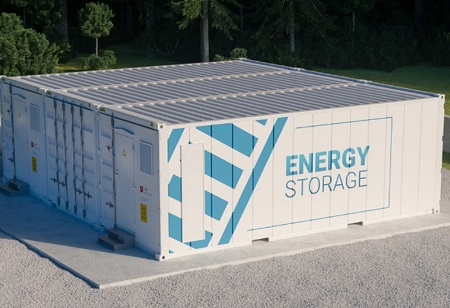Recently, Niti Aayog in association with the Rocky Mountain Institute published a report. The report estimates the country’s future demand for batteries under an ‘accelerated scenario’ and a conservative scenario. This would help support the rise in the number of
electric vehicles, and significant grid storage requirements as well as contribute to India’s energy security.
At present, the country has a trivial presence in advanced cell technologies manufacturing. However, it has a vast potential for large-scale
battery manufacturing . The report shows that by 2030 India’s annual battery market could surpass USD 15 billion and the battery demand in the country is anticipated to reach 260 GWh in the ‘accelerated scenario’.
PLI program
The PLI program is an initiative that will offer the much-needed incentive to boost the manufacturing capacity of batteries. In June 2021, a notification for the PLI program ‘National program on ACC battery storage’ was issued by the Department of Heavy Industry to implement ACC manufacturing facilities for electric vehicles (EVs) and the department allocated a total of rupees 181 billion as the program’s total incentive payout for 5 years.
Value of batteries in Electric Vehicles
The demand for
lithium-ion batteries is anticipated to reach 2.8 TWh annually by 2030, globally as per the RMI’s research and Bloomberg New Energy Finance’s analysis, where most of that demand will cater to electric mobility.
While batteries are the most critical component of an Electric Vehicle, they account for nearly 25-50 percent cost of Electric Vehicles. As costs decrease & specific energy densities continue to go high, the performance, as well as cost competitiveness of EVs, will continue to improve. And this will soon become one of the most attractive choices for customers.
“The business of manufacturing lithium-ion EV batteries is understandably seeing a lot of action as everybody is rushing in to try and make the most from the latest sunrise industry. Manufacturing lithium-ion batteries is not a one
size fits all venture; batteries for cars and other 4-wheelers require an entirely different set of core competencies than say, batteries for 2-wheelers and 3-wheelers,” affirms Rajat, CEO, Lohum.
Stationary storage applications
By 2030 the global ESS applications market is anticipated to reach USD 30 billion. Stationary ESS can provide 17 different services to stakeholders at all levels of the electricity system. These include grid operators, utilities as well as end-user customers.
ACC batteries in India
“India is showing the right intent in adapting to e-Mobility at a substantial speed and along with it the assembling and manufacturing of EV batteries are also picking up steadily,” says Rajat.
The report notes that in the last five years, the majority share of global sales has moved from consumer electronics to EVs, with 54 percent of the global advanced battery sales meeting the demands of the Electric Vehicle industry between 2015-2019.
Electric Vehicles
The report states that many national, as well as state-level initiatives that include FAME II & state EV policies, will build an ecosystem for accelerated Electric Vehicle deployment, for catalyzing the market. The success of remodeled FAME II has given rise to the increase in penetration of Electric Vehicles, with the annual demand for Electric Vehicle batteries in the country anticipated to exceed 135 GWh per year by 2030.
As per the ‘accelerated scenario,’ the segment-wise penetration of Electric Vehicle is new vehicle sales. By 2030 in this there will be 80 percent for two and three-wheelers, 30 percent for private cars, 40 percent for buses, and 70 percent for commercial cars. In a ‘conservative scenario’, a weighted average Electric Vehicle penetration of 35 percent in new sales across all vehicle segments is predicted in 2030.
“The focus on developing battery technologies locally gives a huge fillip to EV adoption across price-sensitive markets like India and creates opportunities to penetrate even the hinterlands by reducing costs throughout the life cycle of the battery. Moreover, every single battery comes with an end life and brings with it the question of safe disposal or recycling. Battery companies and vehicle OEMs will need to have an effectual end-of-life strategy,” explains Rajat.
Recycling as well as reusing leads to stabilizing the supply chain as well alleviates resource constraints and gradually creates a circular economy. This leads to a significant and positive impact on the environment by decreasing carbon credits.
The road ahead
EVs are anticipated to play a significant role in attaining the UN Sustainable Development goals. In India, owing to the surge in demand for clean energy sources, the adoption of Electric Vehicles is likely to grow significantly. According to data provided by the Ministry of Heavy Industries in India, a total of 119648 new electric vehicles were registered in 2020. Hence, the rise in the adoption of EVs is anticipated to bolster the growth of the battery market in the country in the near future.
